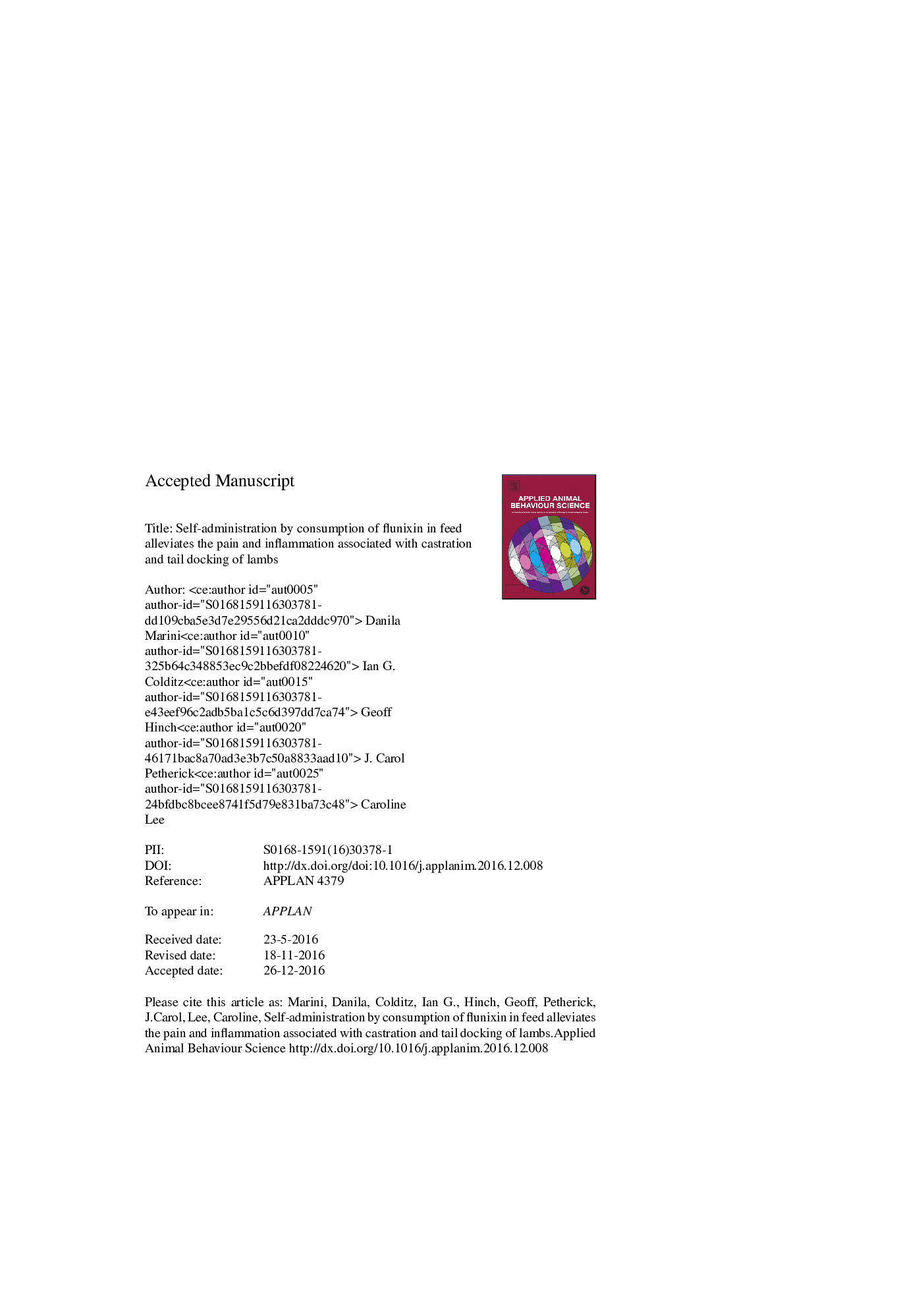| کد مقاله | کد نشریه | سال انتشار | مقاله انگلیسی | نسخه تمام متن |
|---|---|---|---|---|
| 5763335 | 1625318 | 2017 | 28 صفحه PDF | دانلود رایگان |
عنوان انگلیسی مقاله ISI
Self-administration by consumption of flunixin in feed alleviates the pain and inflammation associated with castration and tail docking of lambs
ترجمه فارسی عنوان
خودمراقبت با مصرف فلوئیکسین در خوراک باعث کاهش درد و التهاب ناشی از کراسراسی و سفت شدن دم از بره
دانلود مقاله + سفارش ترجمه
دانلود مقاله ISI انگلیسی
رایگان برای ایرانیان
موضوعات مرتبط
علوم زیستی و بیوفناوری
علوم کشاورزی و بیولوژیک
علوم دامی و جانورشناسی
چکیده انگلیسی
It can be impractical for farmers to provide pain relief to livestock following husbandry procedures such as castration and tail-docking, particularly in pasture-based systems because animals need to be repeatedly gathered to handling facilities and restrained. We investigated whether voluntary consumption by lambs of an analgesic incorporated into feed can achieve pain relief following surgical castration and hot-knife tail-docking. Sixty-four, singleton, male Merino lambs were randomly allocated to one of four treatment groups: sham castration and tail-docking (S), castrated + tail-docked + no pain relief (C), castrated + tail-docked + flunixin in feed (4.0 mg/kg, CF) and castrated + tail-docked + flunixin injection (2 mg/kg, CI). Haematology, cortisol, and plasma haptoglobin concentrations were measured before and up to 48 h after treatment. Lambs also had their scrotal and tail wounds scored based on severity of swelling and wound appearance, with 2 being a healed wound and 8 being severe swelling and evident necrosis and pus. Behaviours were recorded by video for 12 h after treatment. Lambs in the CF and CI groups displayed fewer active pain avoidance behaviours (P < 0.05, mean = 3.06 and 3.75 respectively) than C lambs (mean = 6.06) in the first hour following treatment. CF and CI lambs also displayed fewer pain related postures in the 12 h following treatments. All lambs that were castrated and tail-docked had an increase in cortisol 30 min after treatment (df = 57, P < 0.05 for all). The CI group had lower cortisol concentrations by 6 h (t = 2.17, 25.02 nmol/L) and CF by 12 h (t = 1.76, 33.44 nmol/L) compared with C lambs, however these concentrations were still above basal levels. Flunixin treatment also reduced inflammation, with CF and CI lambs having lower neutrophil/lymphocyte ratios and lower mean wound scores than C lambs. Provision of flunixin in feed was as effective as the flunixin injection in improving behaviour and reducing inflammation in lambs following castration and tail-docking.
ناشر
Database: Elsevier - ScienceDirect (ساینس دایرکت)
Journal: Applied Animal Behaviour Science - Volume 188, March 2017, Pages 26-33
Journal: Applied Animal Behaviour Science - Volume 188, March 2017, Pages 26-33
نویسندگان
Danila Marini, Ian G. Colditz, Geoff Hinch, J. Carol Petherick, Caroline Lee,
